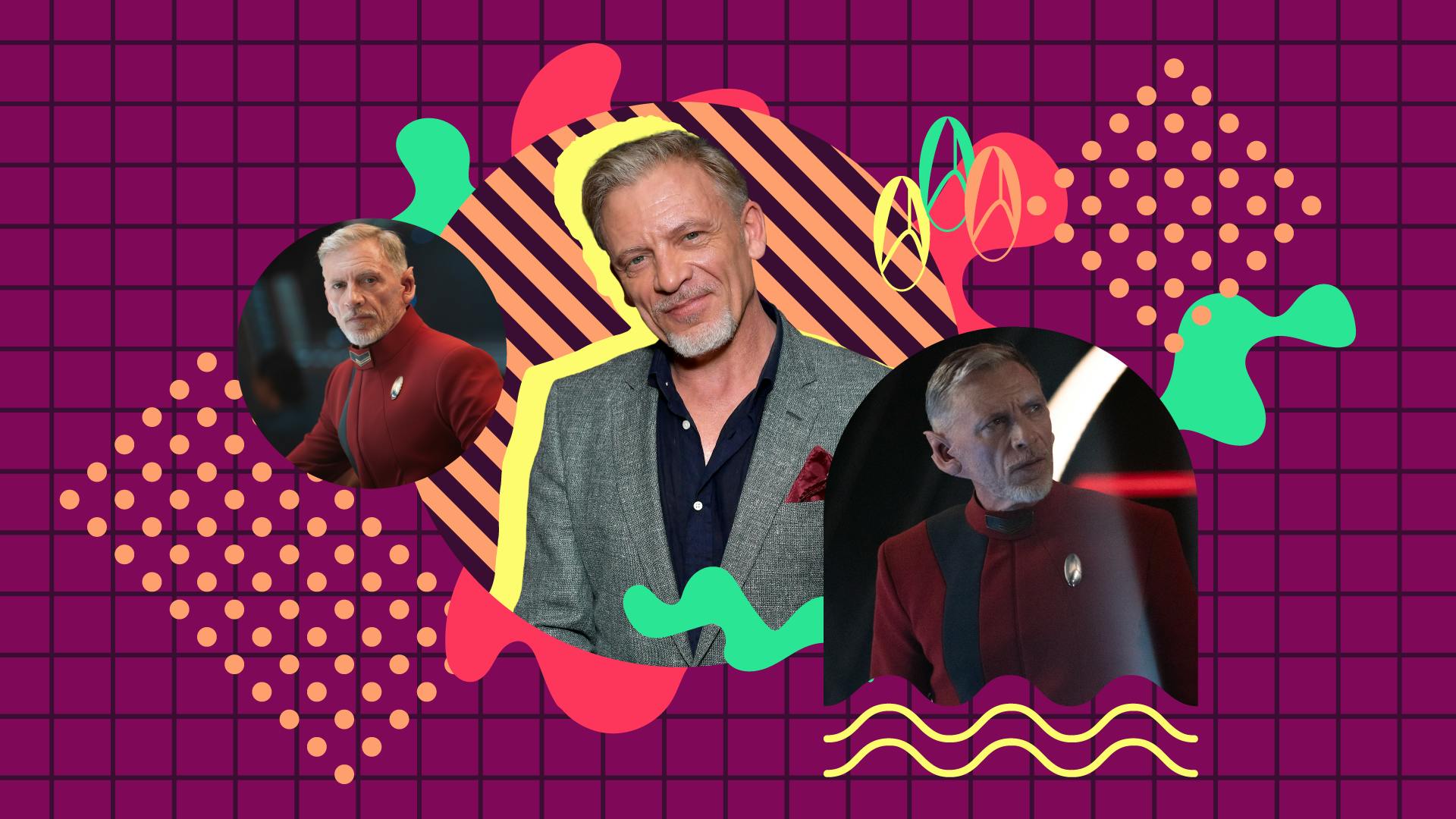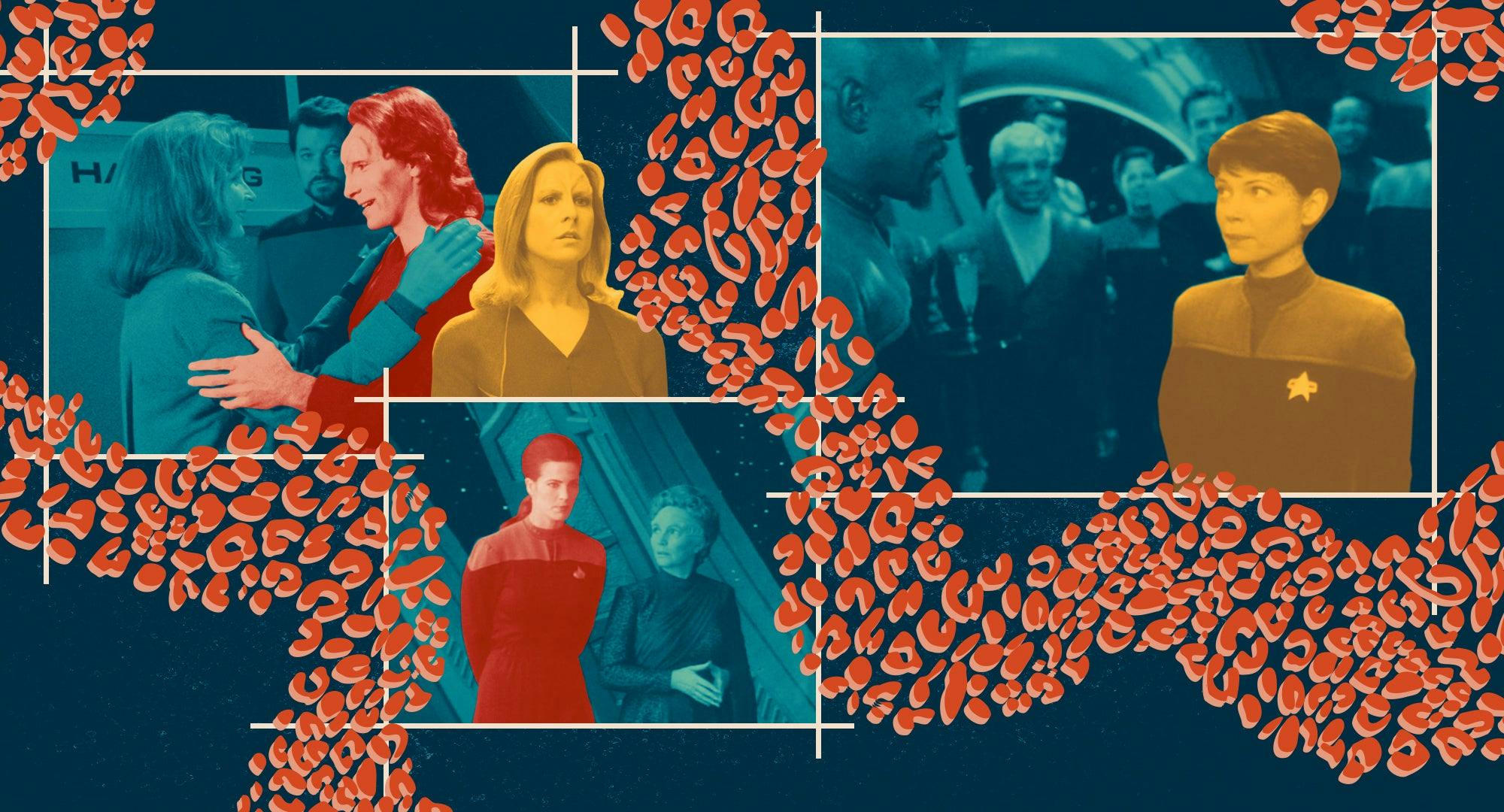Published Dec 4, 2023
The Beginner's Guide to Star Trek's Interstellar Politics
New life, new civilizations, and… new bureaucracies?
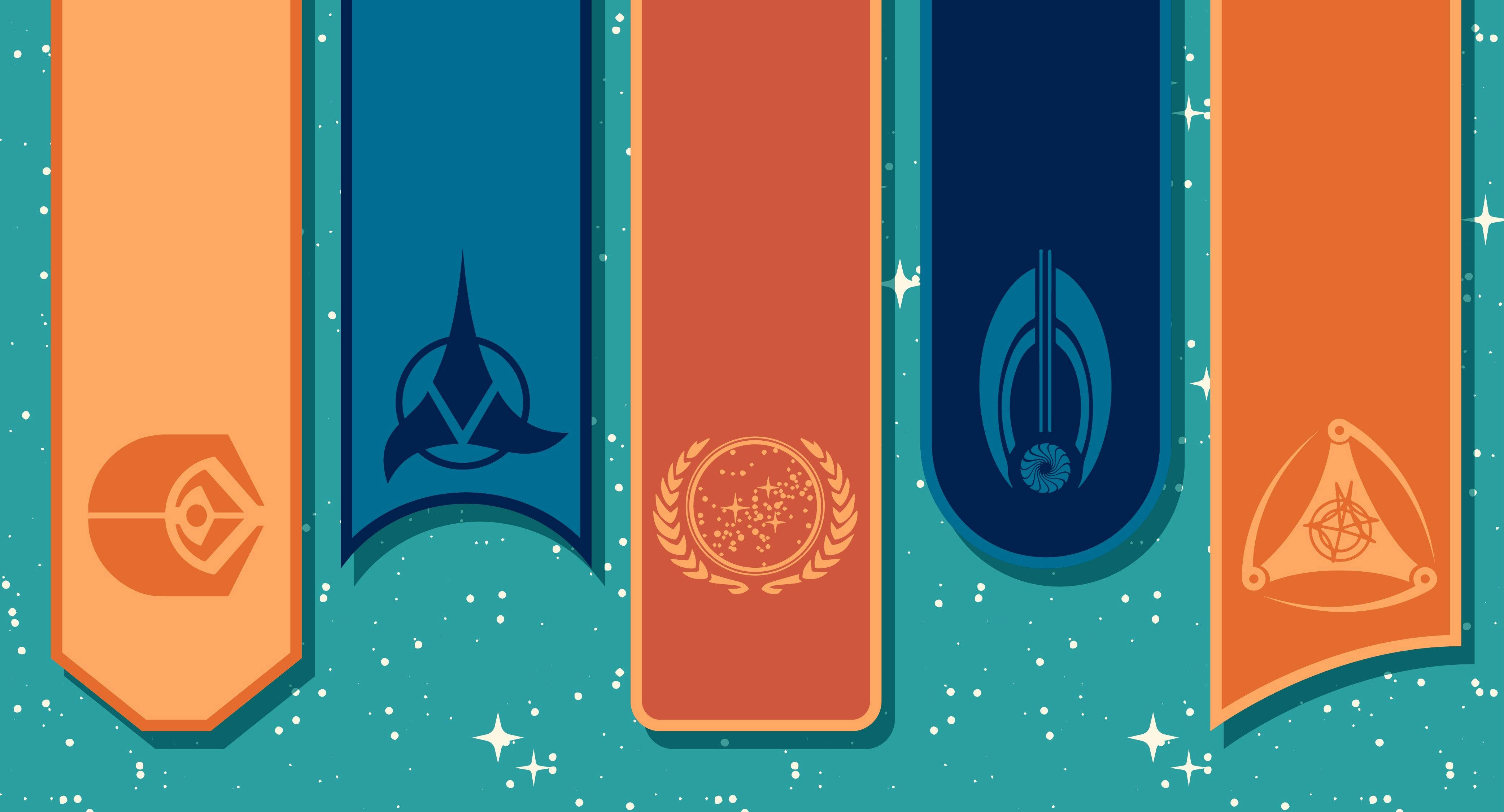
StarTrek.com
Spaceships are cool. Photon torpedoes are cool. And aliens are super cool. But as much as Star Trek has always been about those things, it’s also always been about something slightly less cool — politics.
Star Trek has based much of its drama — and many of its philosophical questions — on ideas about what futuristic governments might look like, from the military dictatorship of the Cardassian Union, to Vulcan’s rationalist meritocracy, to the matriarchies of Orion, Angel I, and the Skrreeans.
“Men are far too emotional to be leaders,” a pretty-hard-to-argue-with Skrreean explains in Star Trek: Deep Space Nine’s “Sanctuary.” “They’re constantly fighting amongst themselves. It’s their favorite thing to do.”
Trek’s fascination with statecraft also says something. That, like it or not, politics affect everything, from daily routines to quadrant-spanning wars. There’s a reason that Starfleet captains consider diplomacy as much a part of the job as exploring strange new worlds. And while captains like Sisko and Kirk might bristle at political maneuvering, others, like Picard and Janeway, relish it.
Let’s follow Picard and Janeway’s lead and look at Star Trek’s most important governments.
The Klingon High Council
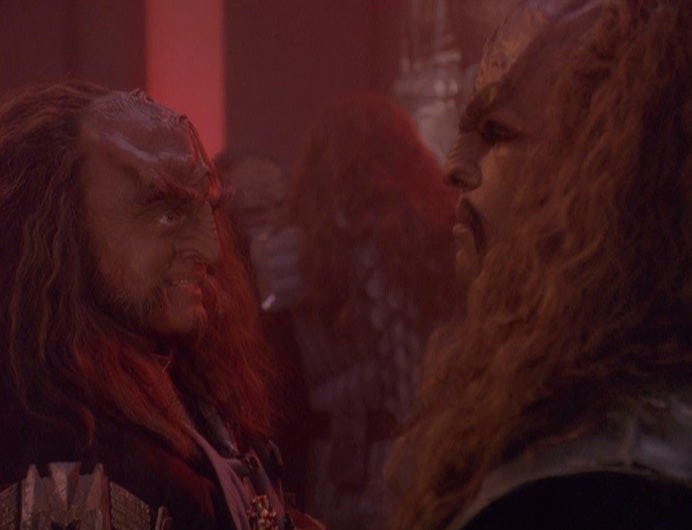
"Apocalypse Rising"
StarTrek.com
When Star Trek premiered in the midst of the Cold War, the brusque, imposing, and monolithic Klingons were analogues for the Russians, who, at the time, were characterized in American media as (you guessed it) brusque, imposing, and monolithic. But as Trek progressed, so did its portrayal of Klingons. While some Klingon-centric episodes flirted with the weary trope of the “noble savage” — a concept that addresses how colonizers have historically ignored Indigenous peoples’ complex histories, and instead characterized them as proud but backwards warriors — later episodes imbued Klingon culture and government with significantly more depth.
Once ruled by a monarch, the Klingons now follow the dictates of the Klingon High Council, a legislature overseen by a chancellor. But regardless of fancy-pants words like “legislature” and “chancellor,” Klingons still really like to fight, so when it comes to succession, “peaceful and orderly elections” are less of a thing than “vicious, unmerciful combat to determine who’s the strongest.” Which, now that I think about it, isn’t that different from a representative democracy.
The Romulan Senate
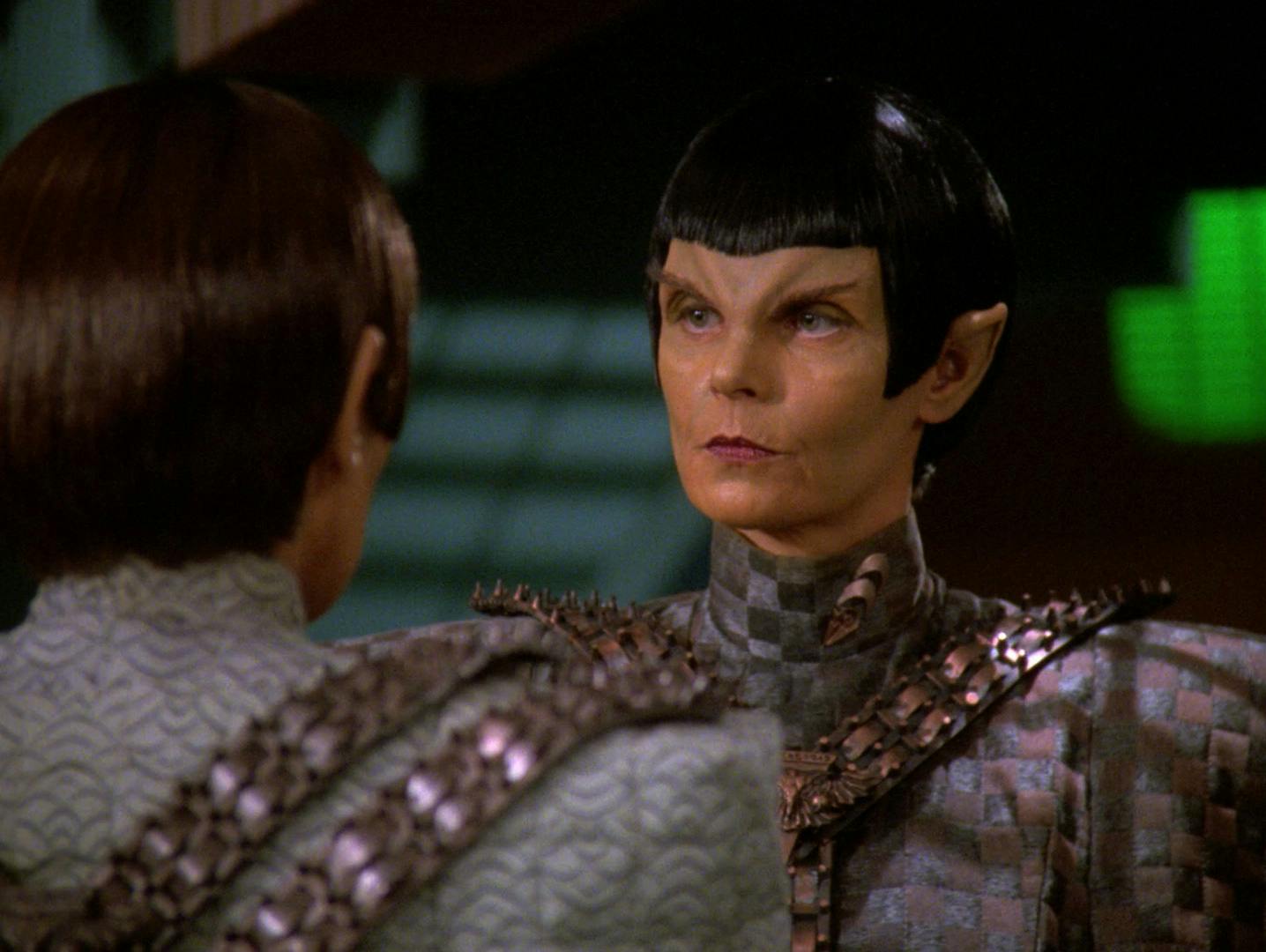
"Face of the Enemy"
StarTrek.com
Much as TOS drew parallels between the Russians and the Klingons, the Roman Empire informed nearly everything about the martial Romulans and their Romulan Star Empire. Even the Romulan Imperial Senate is a riff on the Roman Senate, except Romulan senators somehow have even worse haircuts.
Or, you know, they did… until Shinzon assassinated the senators in Star Trek Nemesis and Romulus got eaten by a supernova in Star Trek (2009). Session adjourned, Romulan Imperial Senate!
The Bajoran Republic and the Vedek Assembly
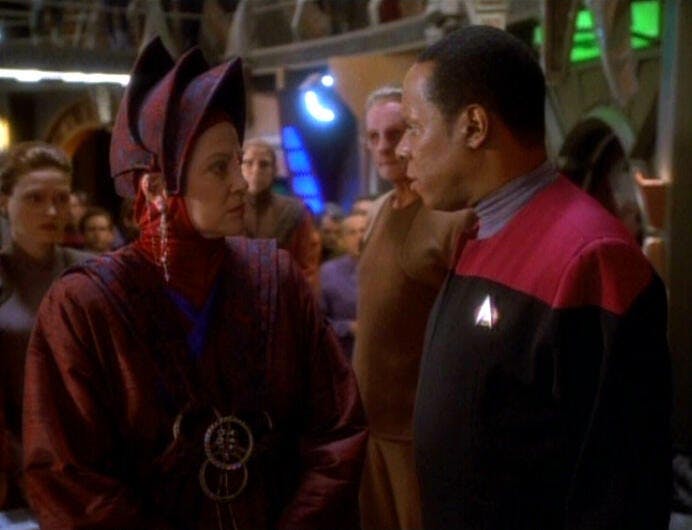
"In the Hands of the Prophets"
StarTrek.com
Ostensibly, Bajor’s government is the Bajoran Republic, but anyone who spends two seconds on Deep Space 9 knows who’s really in charge. That’d be the rigid, traditional Vedek Assembly, which oversees Bajor’s planet-wide religion.
Bajor is a de facto theocracy — a government in which policy is determined not by what’s best for the people, but by ancient religious tenets. To be fair, most Bajorans seem pretty cool with it.
The United Federation of Planets
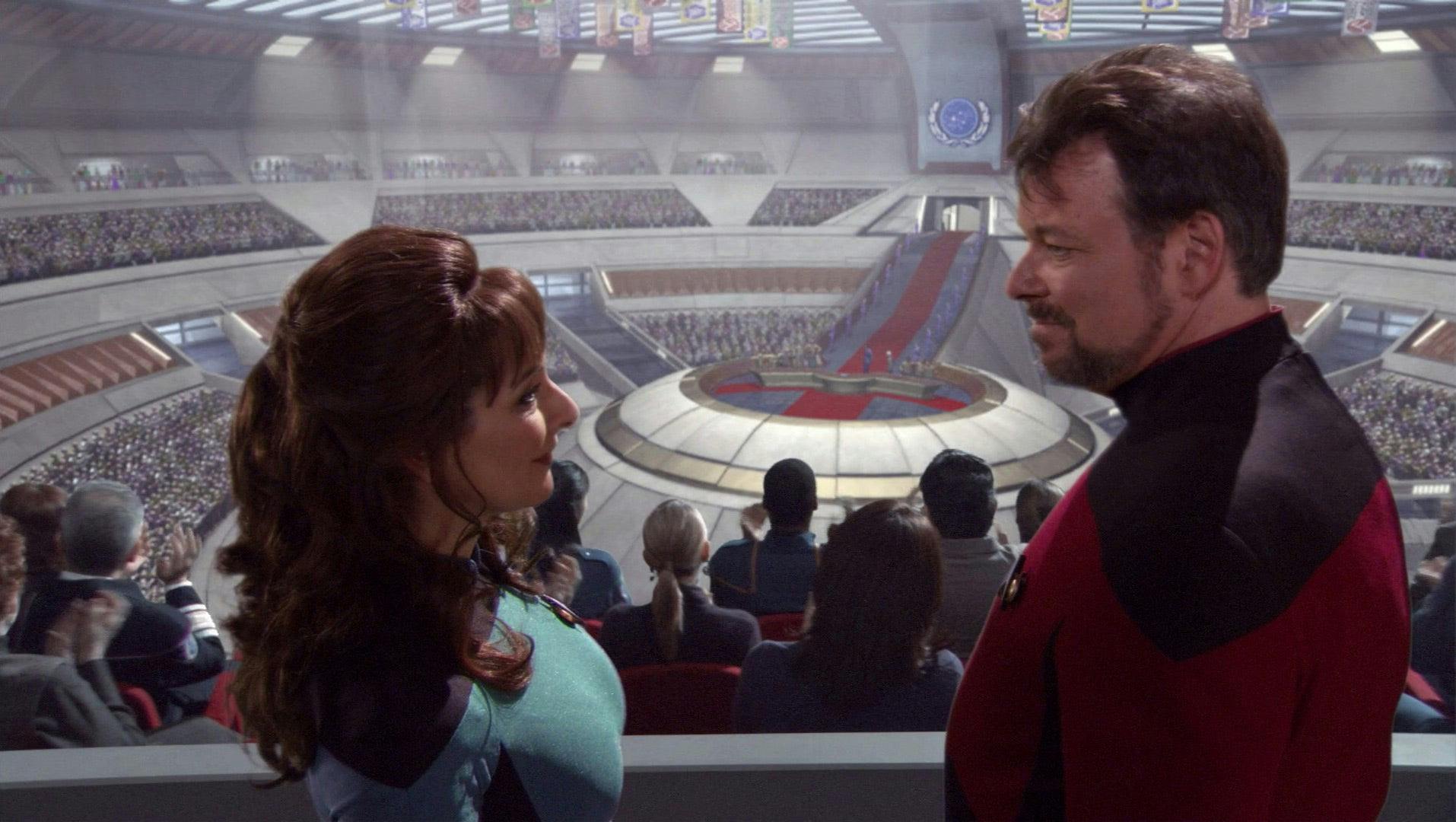
"These Are the Voyages..."
StarTrek.com
Originally conceived as the Coalition of Planets, it wasn’t long until diplomats from Earth, Vulcan, Tellar, and Andoria realized their relationship was getting serious, so they formed the United Federation of Planets — Star Trek’s optimistic vision of a powerful, peaceful, and multicultural democracy. The Federation has a number of Earthbound inspirations; while its structure draws heavily from the League of Nations and the United Nations, there’s also some stuff in there from the United States.
From Star Trek VI: The Undiscovered Country to Star Trek: Discovery, much of the best Trek examines not only the promise of the Federation, but the challenges it faces, along with the question of how a representative government might function if it wasn’t undermined by economic conflict and disparity.
“People are no longer obsessed with the accumulation of things,” Picard says of the Federation-ized future in “The Neutral Zone.” “We’ve eliminated hunger, want, the need for possessions. We’ve grown out of our infancy.” And while the result of a governing body that rejects nationalism and conquest in favor of humanism and exploration remains as inspiring as ever, Star Trek: Picard offers a timely reminder. Functional governments are hard work, and even the strongest ones can betray their ideals and purpose, especially when populaces fail to remain engaged and active.
The Xindi Council and the Dominion

"The Xindi"
StarTrek.com
The Federation is hardly the only interstellar superpower; plenty of other races have also teamed up, and most aren’t interested in the Federation’s flower-power daydreams.
In Star Trek: Enterprise, the Xindi Council, made up of five species that evolved on the same planet, attacked a pre-Federation Earth, and in Star Trek: Deep Space Nine, the Dominion — an uneasy alliance chiefly made up of the Founders, the Cardassians, and the Breen — became the Federation’s greatest threat to date. (It’s worth pointing out, too, that the Dominion is essentially a dark, Mirror Universe-type version of the Federation. And the implication that many less-powerful worlds joined the Dominion out of self-preservation rather than shared ideology raises a discomfiting question — How many worlds joined the Federation for the same reason?)
Though the Dominion eventually fell, they deserve some props. They genetically-engineered two entire species just to deal with the crummiest parts of running a government! The Vorta took care of all the boring administrative stuff, and the Jem’Hadar took care of all the bloody dying stuff! If nothing else, the Dominion’s leaders were great at structuring a bureaucracy.
The Ferengi Alliance
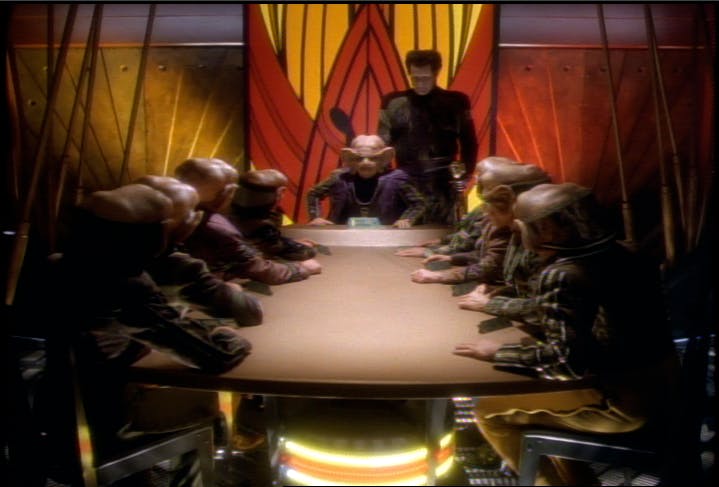
"The Nagus"
StarTrek.com
At last, a Trek government that resembles those of 21st Century Earth — governments built on entrenched and outdated power structures, rigid caste systems, and systemic objectification and exploitation! Oh, and money! Lots and lots of money, with (stop me if you’ve heard this one before) most of it in the hands of a few.
Overseen by the ultimate one-percenter, the Grand Nagus, the Ferengi Alliance’s insatiable hunger for profit determines everything the Ferengi are involved with, from interstellar trade to gender dynamics. Like many species in Trek that make one-off appearances, the Ferengi were initially built from pieces of crude caricature that, in this case, some saw as anti-Semitic. Thankfully, as characters like Quark and Rom (and their utterly, completely, absolutely wonderful mother Ishka) appeared more and more, portrayals of both Ferengi and their system of governance became more nuanced.
Ultimately, Trek used its Ferengi characters — some of whom benefited enormously from their government’s blind embrace of late-stage capitalism, and others who most certainly did not — to examine a very Trek idea: That insight, empathy, and activism can make even a system as corrupt as the Ferengi Alliance more equitable and representative for all.
But I’d still rather live in the Federation.
Special thanks to Dr. Kurt Güner (he/him) for advising on the historical parallels between Earth’s real-life governments and Star Trek’s make-believe space governments.
